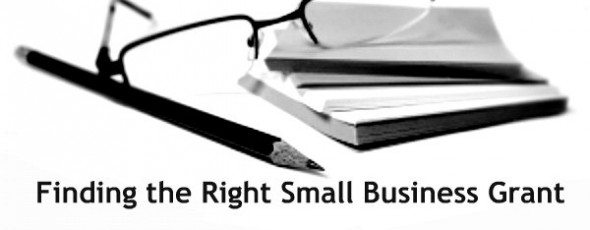Why to get a grant you should get a sample grant proposal for small business first? Here is the answer. In order to get grant for your small business start-up you will likely have to write an appropriate grant proposal beforehand. It’s a formal application that individuals, nonprofit organization or a business company submit to a certain agency that offer grant to be considered as their receiver.
Most people don’t really know how to make a proper grant proposal so they have to look out for a sample business grant proposal to get the right idea about the content of the proposal. Here we will provide you step by step and tips to use a sample grant proposal to make a proper grant proposal.
Guide to Use Sample Grant Proposal for Small Business
A small business grant proposal, much like a typical grant proposal, serves as a clear and concise presentation of your intended actions before they are implemented. Typically, it is a written document that can be prepared either online or in physical form.
You submit your proposal to a specific funding agency that offers grant opportunities aligned with your interests. The proposal should provide a thorough explanation of the rationale behind your project. Also, outline why you are seeking grant funding from a particular funder. It should address the who, what, when, where, how, and why of your proposed project or program.
By presenting your proposal in a well-organized and thoughtful manner, with clear and concise explanations, you increase your chances of receiving approval from the grant reviewers. Here are the steps on how to use sample grant proposal for small business:
1. Look for the suitable grant proposal sample
The very first step to make a grant proposal is to find the right sample grant proposal that is suitable for your specific project. You can do this by googling it on the internet to find a sample grant similar to your project. Get several samples to be compared.
The second step is to compare the grant proposal samples you get in order to recognize the limitation each sample have as a guide to write the perfect grant proposal. You will need several samples because you may find several different points of the agency’s proposal requirement. You can choose among those samples the best format and content suitable for your specific grant project.
The third step in finding the suitable grant proposal sample/s is to analyze its structure and style and then apply the appropriate content and strategies to the information required in your grant proposal. Grant proposal commonly has several points of elements such as an abstract, needs statement, project description, action plan, evaluation, and budget. By having some sample to consult with you will get a better idea and understanding of the content of a proper grant proposal.
2. Start writing the grant proposal
The first step in writing the grant proposal is to determine the structure of the information and your project details that you will present. In this step, you can use the sample grant proposal as a guide to writing your project’s budget such as travel expense and employee compensation. We recommend you to try and write the basic element of your grant proposal first without consulting on the grant proposal sample. Then, when you finished you can look at the grant proposal sample to double check them for accuracy.
Write the grant proposal’s section using the samples as a guide to achieve an appropriate level of content details and structure. Make sure you write it according to the requirement given by the granting agency.
Last step on writing the perfect grant proposal by using small business grant proposal samples is to revise before submitting it to the granting agency. Ensure you don’t make any grammatical or typing mistake to give a good impression to the grant provider.
What Makes Good Small Business Grant Proposal
A good small business grant proposal possesses several key characteristics that contribute to its effectiveness. The proposal should be clear and easily comprehensible, avoiding overly complex language or technical jargon. It proposes a project that is achievable within a specified time frame, considering resources, capabilities, and constraints.
Besides, the proposal is succinct and to the point, providing necessary details without unnecessary verbosity. It outlines what will be done, when it will be done, and how it will be accomplished. This provides a clear roadmap for implementation.
Next, the proposal tells a captivating story. Explain the background that led to the business decision and articulating the benefits that stakeholders will experience. Make sure it maintains a logical flow of ideas and ensures seamless transitions between sections, maintaining the reader’s engagement.
Incorporating visual elements such as charts, graphs, or images can enhance the presentation and make the proposal more visually appealing. Keep in mind that the proposal engages the reader and may include testimonials, case studies, or other forms of social proof. This can support its claims and strengthen its credibility.
While possessing these characteristics does not guarantee approval, it significantly increases the likelihood of securing the desired funding. A well-written, visually appealing proposal supported by compelling research and data is essential for success.
What is A Bad Grant Proposal?
Bad grant proposals often share common shortcomings, which can hinder their effectiveness and reduce the likelihood of securing funding. Some key characteristics of a bad proposal. The proposal fails to clearly communicate what is being proposed, leaving the funder confused about the intended project or program.
Also, the proposal is riddled with grammatical, spelling, or formatting errors, indicating a lack of attention to detail and professionalism. The proposal sets unrealistic goals or timelines that are not feasible given the available resources or constraints.
Besides, the proposal lacks clarity on the expected outcomes or impacts of the proposed project. Thus, making it difficult for the funder to assess its potential effectiveness. The proposal does not align with the goals or priorities of the funding organization. This mistake makes you cannot demonstrate how the proposed project fits within the funder’s mission or vision. Avoid creating a proposal that fails to captivate or excite the reader, failing to inspire enthusiasm or interest in the proposed project.
In summary, bad grant proposals suffer from poor writing, lack of clarity, unrealistic expectations, and failure to align with the funder’s objectives. It is crucial for applicants to invest time and effort into crafting well-written, coherent, and persuasive proposals to maximize their chances of success.
Rerefence:
- How to Write a Grant Proposal Using a Sample – http://smallbusiness.chron.com/write-grant-proposal-using-sample-15357.html
- Images: blog.ecivis.com, smallbusinessbonfire.com, suite101.com
- (https://www.excedr.com/blog/how-to-write-a-small-business-grant-proposal)



